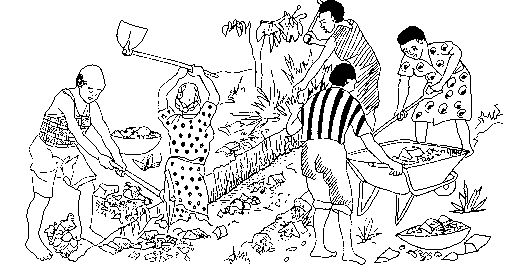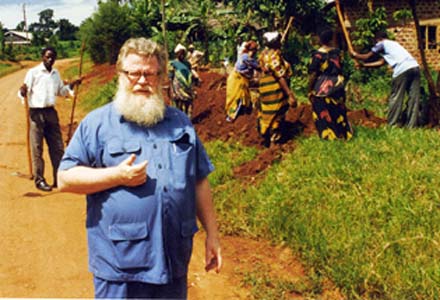Tweet
Translations:
WATER AND THE MOBILIZER
When the Community Chooses Clean Drinking Water
By Phil Bartle, PhD
Dedicated to Andrew Livingstone
Introduction to the Module (Hub)
Documents Included in this Water Module
- Considering Water, issues for the community mobilizer;
- Water, Health and the Empowerment of Communities, PHC principles for strength;
- Water as a Community Investment, clean water and a decrease in poverty;
- Politicians and Water, wary allies or dangerous adversaries;
- Water and Public Awareness, community participation in a campaign;
- Sources of Drinking Water, alternatives for community decision making;
- Water Technology for the Mobilizer, getting water to the people;
- Consider the Rope Pump, why not use only locally available parts?
- Repair and Maintenance, water management for communities; and
- Cost Recovery, obtaining resources to manage a water supply.
Do not take water issues for granted
Issues for the Mobilizer and Community:
While most of the training modules on this site are concentrated on how to organize and train a community by encouraging it to unify and choose a priority action, this module has a focus on one sector, the provision of potable (drinkable) water, which may or may not be a priority of any particular community.
The same methods of animation apply. What here in this module are some of the considerations that you the mobilizer – and the community – should make when choosing this sector.
See Considering Water.
The provision of water is a factor in the health of a community, when combined with a few other essential elements, and is therefor ammunition in reducing poverty, disease being an important factor of poverty. It is important for you ─ and the community ─ to know the principles of primary health care (PHC) and the role that water may play in it.
See Water, Health and the Empowerment of Communities.
The provision of water, as an act of empowerment of a poor community, is not the provision of a good for consuming, but is as an investment. How it is an investment, and what kind of an investment is important.
See Water as a Community Investment.
There are many potential sources of water, and each community usually has a range of them. What is important, therefore, is not a rigid insistence on only one kind of water source, but the management of water resources by the community.
See Sources of Drinking Water.
Similarly, there is a range of different technologies, not to mention variations in output and cost, for each potential source of water. The community must manage its supply of water in the light of considering these variations.
See Water Technology for the Mobilizer.
Does water technology always have to be imported? See Consider the Rope Pump.
A community water supply system (or water point) suffers wear and tear and it may require regular inputs such as fuel and lubrication. A community must determine who is responsible for maintenance, who is responsible for repair, and how it is to be managed.
Running a water supply point, or water supply system, requires resources. As part of its management of its water supply, a community must consider alternatives for cost recovery, or what methods it will use to pay for the regular maintenance and repair of its water supply system.
See Cost Recovery.
––»«––
See http://www.thewaterpage.com/religion.htm
Community Members Digging a Trench:
 |
 |
Following the path of least resistance makes all rivers and some men crooked |